Solar panels kit is the cost-effective way of providing power back to shed, cabin, camper, RV and even houses. They are perfect alternative for smelly and loud fuel generators.
Though they are cost more than other power backup options, solar panels kits have very less maintenance as they use solar energy to generate electricity.
Solar panels kits come in different size and cost variants. To choose the best among them, it is important to choose below factors…
- Solar Panel Type: There are four most common solar panel types – monocrystalline, polycrystalline, thin-film and concentrated PV. Monocrystalline and polycrystalline solar panels are suitable for residential purposes. However, monocrystalline costly but highly efficient. Polycrystalline panels are priced lower but have less efficiency. Thin-film and concentrated PV are suitable for commercial purposes.
- Efficiency: It represents how much amount of sunlight can the solar panel covert into electricity. Higher efficiency means the solar panel will convert more sunlight into electricity. Solar panels come with efficiency range of 14 to 22%.Other factors to consider are power, temperature coefficient, warranty and size. We have mentioned them clearly in our “Buying Guide”.
We have also shared the Best Solar Panel Kits that are readily available in the market. Each solar panel kit has unique design and features. Check them in detail!
Best Solar Panel Kits for Homes
Best Solar Panel Kits Reviews
1. Renogy 100 Watts 12 Volts Monocrystalline Solar Starter Kit
Number one on the list is from Renogy brand. The name of the product is Renogy 100-watts monocrystalline solar starter kits. For its easy installation and portable nature made our list in the first place.
It is perfect for the newcomers who are fascinated to learn the interesting concepts and apply to real-time applications like boats, sheds, cabins, and trailers.
You can get this wonderful solar panel kit at reasonable prices. The kit mainly comprises a controller that helps to monitor the solar panel effectively and negative ground controller ensures the safety.
When compared to others, you can expand the power supply up to 400 watts, the input voltage of 12V DC and also implement the PWM (Pulse Width Modulation) technology. When you keep an eye on charge controller, you will be able to see LED indicators and flooded batteries.
A user guide is provided along with the hardware components to guide the newbie starting with an installation process to the maximum amount of power you can apply for performing the specific operations.
The performance of the Renogy solar starter kit is very good and is specially designed for customers who are new to solar technology. Do not damage the rear surface of the solar panel as it will not deliver power to the respective modules.
Pros
- Reasonably priced.
- Battery protection.
- Can charge any other home appliances by supplying a maximum of 12V.
Cons
- Installing solar panel is quite complicated.
- No upgrade option for the microcontroller.
2. HQST 100W/12V Monocrystalline Solar Panel
HQST monocrystalline solar panel comes 2nd on our list. This is the popular brand for designing solar panels and sells worldwide. It is committed to providing each customer with high standard services.
In this solar panel starter kit, you will get everything for what you pay for. The price of the solar panel is very reasonable and ensures excellent performance even in low-light areas.
The solar panel makes use of monocrystalline material covered with a tempered glass to provide stiffness. An advanced encapsulation material enhances the performance by providing long service life.
The back of the panel has holes for fast mounting, security purposes and can even withstand high winds & snow loads. Now the specifications for installing a solar-panel kit are given below:
- 100W of maximum power.
- 600V of DC voltage.
- 75A of a short circuit.
- Weighs 16.5 lbs.
Pros
- Highly reliable.
- Easy to install.
- Moderately priced.
- Uses monocrystalline panels that come with greater efficiency.
- Offers 5-years of warranty for materials and 25-years for output power.
Cons
- Occupies maximum space.
3. ACOPOWER 100W Foldable Solar Panel Kit
Number 3 on the list is from ACOPOWER manufacturer. The company has 7-years of experience in selling the quality products and serves the customers over 50 countries. For this reason, it has become our top priority.
The solar panel kit contains 2 pieces of monocrystalline panels with 10A charge controller and alligator clips. Additionally, you can also connect to the panel via MC4 connectors to charge the battery faster.
To make the solar panel device work effectively, it should be faced directly to the sunlight. It usually works with 2-different batteries at the same time. The components included in designing the solar panel for home or other appliances are:
- Anderson plug
- MC4 connectors
- Solar charge controller
- And the junction box with
- Handle
- Latches
- Diodes
- Fuse
- Crocodile clips
- Carrying bag and
- Aluminum frame
Although the cost is very high, the performance of ACOPower solar panel kit is excellent. The best part of this product is that it can be connected to different components and produces stable power at the output.
Pros
- Easy to set up.
- Portable nature.
- High-efficiency output.
- Angle adjustment feature.
Cons
- High-cost.
- Made of exotic materials.
- Charge controller doesn’t feature waterproof.
4. WindyNation 100 Watt Solar Panel Off-Grid RV Boat Kit
Next one in the list is from WindyNation and the name of the product is WindyNation 100W Solar panel kit. For its uniqueness and budget-friendly nature made us list number 4.
You can charge the panel on an average of 350Wh per day or sometimes it may depend on the availability of sunlight.
The charge controller has adjustable settings to display the readings of voltage, current, and temperature. The controller can handle to a maximum of 4/8-pieces of a solar panel.
Specifications of solar panel kit are as follows:
- 100 watts of maximum power.
- Open circuit voltage is 21.60V.
- Short circuit current is 6.32A.
The windy nation solar panel kit contains the following components:
- Screws
- Clips
- Connecting wires and
- Controller
Pros
- Weatherproof.
- Panels are made of polycrystalline materials.
- Warranty offered by the product manufacturer.
- Adjustable settings of voltages, currents, and temperature.
Cons
- Moderately priced.
5. Flexible Solar Panel MOHOO 100W 18V 12V Ultra Thin Lightweight Cells Solar Charger
Number 5 is from flexible solar panel kit. It is an updated version of the traditional solar panel kits with a junction box at the front side, unique frameless features, and 4-metal mounting holes. After using this product, customers rated it as 5-star for high-efficiency and durable nature. That is why we have listed 5th position of all 14 solar panel kits.
Although solar panels are not much larger than the traditional model, helps to prevent the interlocking diodes at night. But, when compared to others, it is very affordable and produces high-efficiency results.
Some of the specifications you must maintain when place solar panels on rooftops are:
- Diode
- Voltage is 18V
- Current is 5.5A
- Peak power is 100W
- 21V of open circuit voltage
- Operating voltage is 18V
- Short circuit current is 5.8A
- Working current is 5.5A
- ±5% of Power deviation
The performance of solar panel kit is good and mostly used for bikes, cars, boats, aircraft, solar street lamp and satellites. The major disadvantage of this product is that the hardware parts are made of poor quality materials.
Pros
- High efficiency.
- Greater power supply.
- Water-resistant solar panel.
- Very powerful and light weighted.
Cons
- Did not give any warranty information.
6. ECO-WORTHY 1KW Solar Panel System Kit
 Next one is from Eco-Worthy brand. The name of the product is ECO-WORTHY 1KW Solar Panel System Kit. We have listed it number-6 for its Easy installation process and waterproof nature. Let’s get into the details now!
Next one is from Eco-Worthy brand. The name of the product is ECO-WORTHY 1KW Solar Panel System Kit. We have listed it number-6 for its Easy installation process and waterproof nature. Let’s get into the details now!
The panel comes with a 200Ah battery, pre-drilled holes and M/F connectors. It has advanced water and dust protection system against the environmental parameters.
For charging the battery you can make use wind or solar energy. The high quaity panels are ideal for many grid-applications and corrosion resistant frame is extended for outdoor use also.
The following are the specifications of Eco-Worthy 195W PV solar panel kit:
- Maximum power usage is 195W.
- The output voltage is 4kwh.
- Heavy-duty aluminum frame.
- Temperature ranges from -35℃–75℃
Pros
- Waterproof.
- Easy to install and set up.
- Very economical to buy.
- High module conversion efficiency.
Cons
- Poor quality materials.
7. Dokio 100 Watts 18 Volts Monocrystalline foldable Solar Panel
Number7 is from Dokio. It is famous for designing high-quality electronic components and my favorite model on the list.
This solar panel comes with thick fabric protection and a carrying handle to move components to other places. Using the solar monocrystalline material it maximizes the output by reducing the loss.
As it is made up of durable materials; very easy to install and make ideal for long-term usages. You can mount the solar panels on boats, cabins, cars, and rooftops. That is why it more suitable for home or outdoor activities and listed number 7 of top 14.
If you wish to use solar panel kits at home or other premises then consider the following parameters:
- Maximum power is 100Watts
- Operating current is 2A
- Operating voltage is 18V
- Package weighs 2.7kg
The Dokio solar panel kit contents are as follows:
- 100W foldable solar panel
- The solar inverter controller
- User-manual
Pros
- Budget-friendly.
- Low-maintenance cost.
- Can use without batteries.
Cons
- Occupies more space.
- Solar energy is not consistent.
8. Solar Panel, MOHOO 100W Bendable Foldable Thin Lightweight Solar Panel Battery Charger
When it comes to solar panels, Mohoo has created a brand by providing the finest features available in the market. Though it is of high cost, we made number 8 in the list of best 14 because of its power usage capacity and flexible nature.
If you make use of solar panel then you will get greater power efficiency and is no longer considered as a traditional solar panel kit.
When compared with other solar panel kits, it has high conversion rate and foldable option. This water-resistant solar panel is more durable than traditional models making the panel easy to carry to different places.
The overall performance of Mohoo foldable solar panel is fantastic. But the only thing is you need to connect the solar panel to the controller via MC4 connectors.
Pros
- Foldable.
- Waterproof.
- Flexible nature.
- High conversion rate.
- Made of environmental-friendly materials.
Cons
- Too expensive.
- Require more space.
9. WINDYNATION Complete Solar 100 Watt Panel Kit
Number 9 is Windynation solar panel kit. For its easy handling nature and multiple adjusting options; attracts the users to purchase this wonderful product without any delay. That is why we have listed number 9.
The windy nation solar panel kit is specially designed for boats, cabins, home by providing 100 watts of renewable power.
Its function is very similar to the other solar panel kits. The LCD screen displays the voltage reading, panel status, battery charging state and DC load line.
Solar panels are compatible with lead acid, gel and lithium batteries. It can even provide a maximum of 25Ah of charge per day.
Additionally, it incorporates the controller to monitor the power supply (up to 24V). The major components present in the Windynation solar panel kit are as follows:
- Screws
- Clips
- MC4 connectors
- Mounting hardware
- Connecting wires
- Solar panel and
- Controller
Pros
- Reasonably priced.
- Low-maintenance cost.
- Upgradable options.
Cons
- No warranty information.
10. Renogy 200 Watt 12 Volt Monocrystalline Solar RV Kit
Yet, another model from Renogy brand with polycrystalline materials. It is similar to the 1st one in the list but the slight difference is the power factor of 200 Watts.
This wonderful kit is specially designed for the customers who are new to solar technology by providing the applications of trailers, boats and small power stations. It is a budget-friendly device that has all the necessary components to convert the solar (light) energy into the electrical energy.
A user-manual is given along with the hardware components to guide the users by providing the electronic concepts with simple diagrams and graphs. Here are the few elements of Renogy monocrystalline solar kit:
- Cable
- Solar panel
- PWM charge controller
- MC4 connector (M/F)
- Power adapter
- Clips and
- Screws and nuts
Pros
- Reduces electricity bill.
- Budget-friendly.
- Offers an instruction manual.
Cons
- The polycrystalline material is not much effective.
11. 30W Panel Foldable HKYH Solar Panel Lighting Kit
Next one in the list is from HKYH solar panel kit. This branded company is very popular and is committed to providing high customer services.
Just like others, this solar panel kit also provides electricity without any deviation. It is completely an independent power system with a foldable solar panel and large output power. The multiple outlets allow the LED bulbs to work at the same time.
Sometimes it can be used as a portable power supply device and 5V/2A outlet quickly charges cell phone, power banks, shaver and fans.
The parameters you should consider before purchasing the HKYH solar panel kit are:
- Polycrystalline solar panel 11V/30W
- Lithium battery – 7.4V, 13AH
- Light source is 2W LED (2), 3W LED (2)
And the components available in the HKYH solar panel kit are:
- Adapter
- Power cord
- Instruction manual
- DC solar system
- 2W-3W LEDs and
- Foldable solar panel
Pros
- Reasonably priced.
- Flexible to use.
- Uses polycrystalline material.
Cons
- Not a waterproof.
12. ALLPOWERS 100W 18V 12V Solar Panel Kit
Number 12 on the list is AllPowers manufacturer. The name of the product is AllPowers (100W-18V- 12V) solar panel kit. We have listed in 12th position because of its few limitations.
This wonderful kit can deliver high conversion efficiency, fast mounting and greater power efficiency. When compared to other solar panel kits, it makes use of monocrystalline material and is the reason for the panel to bend.
Maintain the following specifications when you design a project or implement on rooftops:
- Optimal power is 100W
- Working voltage is 18V
- Working current is 5.56A
- Short circuit current is 5.8A
- 20V of Open circuit voltage
- Snow resistance is 113psf
- Air resistance is 50psf
The performance of AllPowers solar panel kit is good because it is protected with a transparent medium (waterproof too). But the only downside of the product is that the components are made of poor quality materials.
Pros
- Waterproof.
- Flexible and very convenient to use.
- Offers instruction manual.
Cons
- Expensive kit.
- Poor built quality.
- Didn’t mention warranty details.
13. Suaoki 100W 18V 12V Solar Panel Charger
Last but one in the list is from Suaoki and the name of the product is Suaoki (100W-18V-12V) solar panel kit.
The materials or the components used in the solar panel kit are water-resistant and also offer a bendable panel with 30° smooth curve. It is 25% efficient and the diode prevents the reverse drain current at night times.
You can easily mount this on rooftops, boats, cabins or on other surfaces. The following parameters of Suaoki solar panel kit are to be considered:
- MC4 connectors.
- 100W maximum power.
- 8V of optimum voltage.
- 62A of optimum current.
- Working temperature is -40 to +85℃
Overall, the performance of Suaoki solar panel is impressive because of its portable design and water-resistance nature. But the downside of the product is that the hardware parts of the solar panel kit are made with poor-quality plastic materials.
Pros
- Highly durable.
- Water-resistant.
- Bending option.
- Easy to install.
- Heat dissipation capacity.
Cons
- Poor quality plastic is used.
- Not recommended for children below 5-years.
14. Newpowa100W/12 V Polycrystalline Solar Panel
Finally, end up with the Newpowa polycrystalline solar panel. It is a very popular brand that provides quality products and better services to the customers. Though it offers quality products, there are some minor elements that made us list number 14.
When compared to others the performance of the Newpowa solar panel kit is too good because it can work in different environments, portable design and long-lasting. If you see the rating 85 out of 100 have given a 5-star rating and if you want to have the solar panel in your home within your budget then go for it.
Along with the hardware parts, an instruction manual is given to the customers to guide them about the working of a solar panel with neat sketches. The major specifications of Newpowa polycrystalline solar panel are:
- 100W maximum power
- Voltage is 17.2V
- Current is 5.81A and
- 3-feet MC4 cables
Pros
- Portable design.
- High conversion efficiency.
- Can use without battery.
- Very economical to buy
- 25-years of output power warranty by the product manufacturer.
Cons
- Solar energy isn’t consistent.
- Poor panel efficiency.
What is a Solar Panel?
They are also known as PV panels. Solar panels are designed to convert the light emerging from sun. This light contains energy particles called photons which will be converted into electricity and used to power up electrical loads.
There are several applications that include telecommunications equipment, remote power systems in cabins, remote sensing, residential purposes and commercial solar electric systems.
How Does Solar Panel Work?
Solar panels are designed for producing solar energy. These panels have photovoltaic effect which will produce electricity from sun light. If you are wondering how it happens, then here’s how…
Sunlight contains photons which will knock off the electrons from atoms. This will generate the electric flow. To say in simple terms, the panels will convert the light energy into electricity.
Semiconducting material (mostly silicon) is the main component used for making solar panel. This material is responsible for generating electric charge flow in the form of DC (Direct current).
The DC should be converted into AC (Alternative Current) which is the form required to power up the appliances in houses. This form is achieved through micro-inverter or inverter based on the size of your home or requirements.
The inverter also ensures the energy acquired from solar power is used only when then electricity is not available from the general grid that supplies the electricity. It doesn’t require any manual attention to turn on/off to supply the power. Though solar panels work seamlessly to generate electricity, to achieve the maximum efficiency, you have to change the solar panel angles based on the season of year and location.
Different Types of Solar Panels
There are several types of solar panels. However, most common types used in domestic solar panels are monocrystalline panels, thin-film solar panels and polycrystalline panels.
Crystalline solar panels are the most popular option as it is available in majority of the solar panels that are used for domestic purposes. The purity of crystalline silicon represents the efficiency of solar panel. Polycrystalline solar panels are also a popular option for residential purposes. However, they come with lower efficiency rate compared to monocrystalline solar panels. When it comes to thin-film panels, they are mostly suitable for powering up commercial building and satellites. The last option concentrated photovoltaic cell panels are usually for research labs and satellites.
| Solar Panel Type | Efficiency Rate | Benefits | Drawbacks |
|---|---|---|---|
| Monocrystalline Solar Panels (Mono-SI) | ~20% | Long lifetime value, suitable for residential purposes | Costly |
| Polycrystalline Solar Panels (p-Si) | ~15% | Cost-effective | Sensitive to high temperature, less lifespan |
| Thin-Film, Amorphous Silicon (A-Si) | ~7 to 10% | Flexible, lower price | Commercial purposes, short lifespan and warranty |
| Concentrated PV Cells | ~41% | Very high efficiency and performance | Solar tracking and cooling system needed |
Let’s discuss them in detail now…
a. Monocrystalline Solar Panels
They are made up of melted pure silicon crafted into bars and chopped into wafers. This will let the electrons move freely which results in generating high efficiency rate. Because of this, they are most expensive solar panel models in the market. They have a uniform dark color and rounded edges.
Compared to other solar panels, monocrystalline models have highest power output and take up very less space. Most of these panels have 15 to 20% efficiency rate and longest lifespan of any solar panel type on the market. Most of the manufactures provide at least 25 years of warranty and reliability for these panels.
Benefits:
- Highest efficiency rates (15% to 20%).
- Space efficient
- Capable of performing even in low sunlight levels
Drawbacks:
- Most expensive silicon solar cells
- Performance level may suffer if the temperatures are extreme. But the loss is actually smaller than other solar types
- During the production of these panels, more waste is generated because each side four walls is cut out. The initial silicon used will end up in waste. Some manufacturers use this waste for making polycrystalline panels.
b. Polycrystalline Solar Panels
Polycrystalline solar panels are made from using silicon fragments which are melted together and form wafer panels. Each cell contains many crystals so there is no much space and freedom for the electrons to move around.
In order to achieve the same amount of power similar to monocrystalline panel system, you have to use more polycrystalline panels to cover a large surface area. In some cases, these panels are also referred as multi-crystalline solar panels. These panels cost less expensive as they are simple to make.
The efficiency range of polycrystalline solar panels is about 13 to 16%. Compared to monocrystalline solar panels, these panels have a lighter color and more speckled look.
Benefits:
- Much cheaper than monocrystalline counterparts
- Less waste is generated while production.
Drawbacks:
- They have less energy efficiency 13 to 16%
- To produce same amount of energy as monocrystalline panels, you have to place more physical panels.
- Compared to monocrystalline panels, they have short lifespan.
- They are also less tolerant to temperature changes. However, the difference in energy generation is minimal.
c. Thin-film
They are commonly referred as amorphous systems. These solar panels are created in a unique system that includes layers thin solar cells on base materials like plastic, glass or metal. Compared to other types, this type of solar panels is very cheap to manufacture. So, it is easy to manufacture them in bulk as well. They are easy to install, flexible and less affected by high temperatures.
As these solar panels need a lot of space for installation, they are not recommended for residential purposes. Compared to polycrystalline cells, they degrade at higher rate. Higher temperatures and shading will not affect the efficiency of the panel. So, they are mostly used in wide open spaces like fields and farms.
Benefits:
- Cheaper alternative to other solar panels
- Being flexible, they are quite popular for several kinds of projects including installing solar panels on motor homes and others.
- Temperature tolerant
Drawbacks:
- 4X less efficient compared to monocrystalline panels
- Low efficiency and take more space for installation
- They have shortest lifespan among these three types
d. Concentrated PV Cell
This solar panels are made up of concentrated photovoltaic material. This makes the most efficient than monocrystalline panels with 41% efficiency rate. Being extremely expensive, they are only used on research labs and satellites. They are not suitable for residential purposes.
How to Choose The Best Solar Panels
While choosing solar panels, you have to consider several factors. We have mentioned them clearly in the buying guide below. Read it thoroughly to make the right choice that satisfies your requirements.
1. Power
This factor provides information on the energy output capacity of the panel system (according to Standard Test Conditions). It is measured in terms of watts (w). The power or capacity of the solar panels has direct impact on the cost and usually compared in dollars per watt.
Watts provided represents the output of each module. For example, if you have installed 100W panel, then it will generate 100 watts hours of electricity every hour under ideal conditions. If you install 200W panel, then it will generate 200 watts every hour. When it comes to price, you will have to spend twice the amount for 200W compared to 100W solar panel.
Apart from price, output of the solar panel can also impact its size. For example, 200W panel will have a large size than 100W module. Solar cell types used in the product also impact the size of the solar panel.
The main factor to consider while analyzing the size of the solar panel you have to consider how much power do you need to power up the appliances. and moreover the solar panels should physically fit in the area while installing them.
If you have north facing roof space, then it is the most valuable place to install solar power real estate. Apart from north, west facing panels are also helpful. If in case, there is a chance you want to increase the solar panels, then make sure you have to enough space to install more. Or else, you may have to just to replace the whole model, even if it is working perfectly fine.
2. Efficiency
It represents how much amount of sunlight can the solar panel covert into electricity. While analyzing this feature you have to use the basic rule – higher efficiency means the solar panel will convert more sunlight into electricity.
Usually, most of the solar panels manufactured by major brands come with efficiency range of 14 to 22%. The efficiency of solar panel can also impact the output of solar panel. For instance, 300W solar panel has 17.89% efficient and 290W has 17.3% efficient.
3. Power Tolerance
It will determine how much the solar panel can deviate from its original stated power by the manufacturer. This deviation is usually expressed in watts or percentage. For example, 100W panel will have tolerance of +3% / −0% – means the actual power can vary between 100 to 103W. However, if the tolerance is +%W / -0W, means the actual input can vary between 100W to 105W in general conditions.
4. Temperature Coefficient
As already mentioned above, temperature can have an impact on the efficiency of solar panels. If you have to know how much impact will be there on the solar panel efficiency because of temperature rise, then you have to check out the temperature coefficient. It is represented in terms of percentage decrease in power output for every 1°C increase in temperature (above 25°C or 77°F). After this range, the efficiency will energy production by solar panels will decrease.
While analyzing this factor, you have to understand that solar panels will not work well in extreme sun (i.e., summers). For example, solar panels were tested at 45°C but no you may be experiencing 55°C temperature. If the solar panel is rated with temperature coefficient of 0.4% watt power, then to know the exact efficiency, you have to multiply it with difference in temperature (10°C).
Temperature coefficient can be different for amperage, voltage and wattage. Monocrystalline solar panels perform better than other types at higher temperatures. This factor isn’t most important one unless you live in an extremely hot climatic locality. Because heat has a major impact of the efficiency of solar panels as it reduces the output.
5. Performance Degradation
It’s common for solar panel to experience a decrease in performance over long term (like 25-years lifespan). After 1-year of solar panel installation, you can experience 2 to 3% decrease in the efficiency. And you will experience 0.2 to 0.7% degradation every year after that.
6. UL Listed
UL means Underwriters Laboratories – it is an organization with an experience of around 100 years. This organization will set the standards and performs safety tests to make sure the products are safe and efficient for public use. If you are going to install them in your home, then check out for UL 1703 standard certification.
7. Size and Weight
This factor is important to consider for people who don’t have limited roof space for installing solar panels. Dimensions of solar panels are mentioned in L x W x H. You have to choose based on your preference and space you can afford for the installation.
When it comes to weight, you should know how heavy they are. If your house roof top is not strong enough to handle the weight of solar panels, then you should opt for light-weight models.
9. Maximum Wind Load
This factor represents the tolerance of solar panels when there is maximum wind load. This tolerance is represented by manufacturer in pascals (Pa). Higher the pascals, better will the wind tolerance. Most of the solar panels available in market are have 2,400 Pa certification which is actually equivalent to 140 mph.
10. Cost Per Watt
For most of the people budget plays a major role in decision making process. Solar panels are available in different sizes and size plays a major role in the pricing factor. Full-sized panels come in 275 to 400 watts price range. Small panels are suitable for off-grid applications. Monocrystalline solar panels (100W) come within price range between $210 to $300. Polycrystalline solar panels (100W) range between $70 to $110. Thin film solar panels (100W) range between $180 to $230. If you want more than 100W solar panels, then the price will increase based on that.
11. Brand Reputation
What good is the product is it doesn’t last long or has any customer service to help you in the time of need. Usually, popular and well-known brands have good customer service. To know the brand record and how they behave with customers for their issues, we recommend to read the reviews of customers. It is better to choose a brand that has stable track record with solar panels.
12. Warranty
Most of the solar panels come with a warranty period which ensures the system functions smoothly for sure in that time duration. Warranty period of solar panels range from 10 years to 25 years depending on the manufacturer.
Benefits of Using Solar Panels
There are several advantages of investing in solar panels. We have mentioned them below for your reference.
- Solar power is very economical and clean with almost no maintenance requirements. They are also considered as one-time investment for this reason.
- Solar panels usually last up to 25 years and with less maintenance, they save a lot over long term.
- Power transformed from sunlight is actually renewable and pure.
- The panels don’t emit any fumes, carbon or greenhouse gas.
- They are absolutely silent.
- They are self-sustaining so you don’t have to worry about them much.
How to Calculate the Solar Panel Capacity For My Needs?
Before purchasing solar panels, you have to understand how much capacity is required to power up your house. For that, you have to calculate your exact needs…
- Analyze how may and which devices you need power backup
- Determine how many watts does each device use
- Decide how many hours per day do you want the power backup
Below is the calculation that helps you decide…
First calculate how many watts hours per day does each device will need.
For example, 20W x 3-hours run time equals to 60watts.
Now add the watt hours of every device to know the exactly how much watts hours you require.
60 watt hours (device A) + 300 watt hours (device B) = 360 watt hours
How To Calculate Compatible Battery for Solar Panels?
Once the solar energy is absorbed through solar panels, the energy will be send into a battery for storage purposes. From battery, it will be distributed to appliances when required. You should purchase a battery that has enough capacity to handle your requirement.
Battery capacity of solar panels is measured in ampere hours. So, Energy Needs / battery voltage = Battery ampere hours.
For example, if we consider battery capacity of 12v battery system with 490 total watt hours.
So, 490 / 12 = 40.8 ampere hours
But batteries are not always 100% efficient all the time. So, let’s consider the battery efficiency as 80% ampere per hour.
So, 40.8 x 0.80 = 32.6 ampere hours
Now that you have got the exact requirement, you should consider purchasing a battery that has at least a little bit higher than the calculated total ampere hours.
Frequently Asked Questions
Efficiency of solar panels determine how well they can convert sunlight into usable electricity. Average efficiency of solar panels is considered 18.7 percent which states that under standard temperature conditions, 18.7% of sun light that hits the panels will be transformed into usable electricity.
The energy transformed by solar panel largely depends on sunlight availability and location as well. However, in general conditions, most of the solar panels will provide power output from 250 to 400 watts. The average output is generally considered as 320 watts. Number and size of panels also impact the efficiency of solar panels.
When it comes to type of solar panels, monocrystalline models are efficient than polycrystalline panels. Both monocrystalline and polycrystalline panels are more efficient than thin-film solar panels. There are several types of solar panels which have their own benefits and drawbacks. Solar panels that are commonly used in rooftop come in less variations but still come considerately different from each brand.
The efficiency of solar panels is calculated based on how much the solar panel can convert the light energy into usable electricity. To say in specific terms, it is a part of sun light energy that will be transformed into usable energy.
Manufacturers calculate this efficiency by multiplying the radiation flux or quantity of sunlight available in the locality based STC (standard testing conditions) and solar panel area in square meters. The panels wattage (minimum is considered) is then divided with this number and again multiplied with 100 percent to get the solar panel efficiency.
Solar panel efficiency is determined using several factors. On an average, solar panel with 14 to 18% efficiency is enough for residential purposes. So, you don’t require higher efficiency rating is not the only thing to consider. Apart from that, you have to consider power ratings, efficiency, and degradation rates. Below, we have mentioned several external factors that can affect the efficiency of solar panels.
a. Orientation
Some solar panels that have photovoltaic system (PV) have the capability to reposition themselves according to sun’s position so that they can provide maximum performance. However, if you have solar panels that don’t have any tracking system, then you may have to adjust the solar panels at least twice in a year (once in summer and again during winter season. During winters, you have to adjust the solar panel’s angle a bit higher.
b. Shade
It is obvious that shade is not good for solar generators or solar panels. As they are connected in a series, even a small amount of shade on single panel can stop the solar production on all the solar panels. So, it is important to trim the trees to ensure the solar energy is not interrupted by any reason.
c. Temperature
Just like any other mechanical equipment, solar panels work properly when they are maintained dry and cool. If the temperature is too high (which happens in summer), then the solar energy conversion by 10 to 25%. In order to maintain high efficiency rate, the solar panels should be placed in localities where air flow and natural cooling is significant. Before purchasing, check out the panel’s temperature coefficient as it describes how efficient the panels are in producing the electricity when the climate is less than ideal.
d. Temperature
Though regular maintenance is not required, routine cleaning is still important that includes removing dirt, dust and other contaminants. They can affect the efficiency drastically. If the area where solar panels are installed doesn’t receive any rainfall, you can just wipe off the dust with soap water. If you can’t, then it is better to hire a cleaning service.
This is the most common question often asked when it comes to choosing right solar panel. However, the answer is a bit controversial. Panels are capable of working regardless of types of system. To say clearly, there is no specific difference between off-grid panels and grid-tied panels.
However, panels should be combined with other components and compatible sizes. This is even more important for off-grid systems. Off-grid systems contain PWM charge controllers. It is important to match 12v solar panels with compatible 12V battery bank.
Most of the off-grid homes use MPPT charge controllers. They have the compatibility to adjust the PV voltage according to the solar panel. You should also maintain the compatibility of batteries so that they don’t get overcharged. When it comes to off-grid applications, there are only handful panels models designed in that way.
Conclusion
Of all, my top pick will be Renogy 100W/12V Monocrystalline Solar Starter Kit because it was designed for entry-level candidates to professionals for understanding the concepts without any difficulty.
This starter kit mainly features the controller and PWM-technology that in turn responsible for the overall performance. Though the product is costly, for its easy installation process and portable nature made our list in the first place.
If you wish to have a solar panel in your home then immediately purchase the kit to save time and money spent on other resources.
Solar panel kit is perfect for newcomers who are fascinated to learn the interesting concepts and apply to real-time applications. It will definitely be a great asset for the children to get into the core electronics.
Just get it with a single click and tell us how you are benefitted in the comment section given below:
The post Top 14 Best Solar Panel Kits for Homes In 2021 appeared first on Electronics Hub.


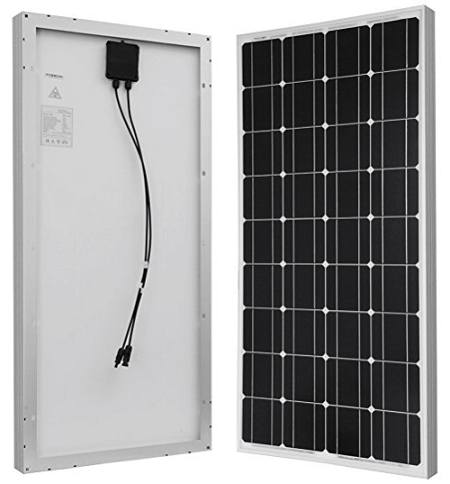
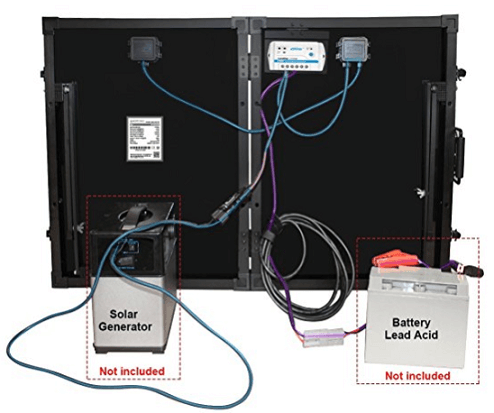
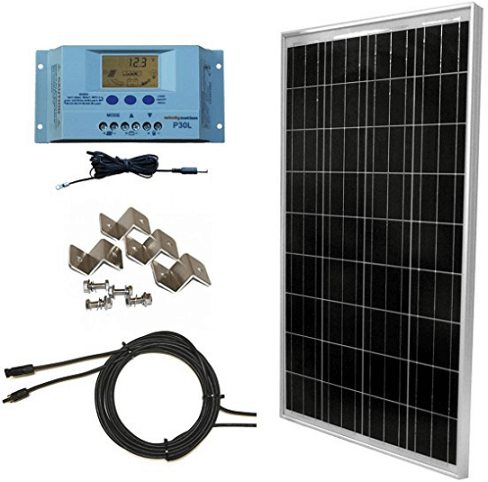
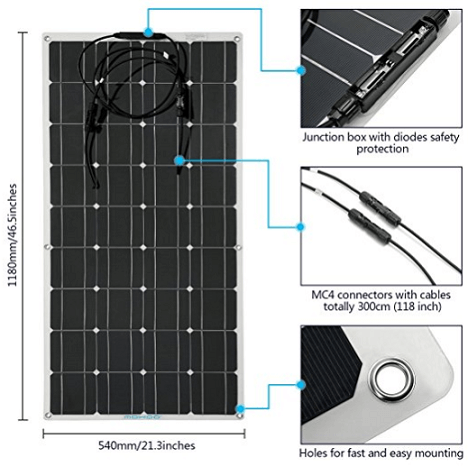
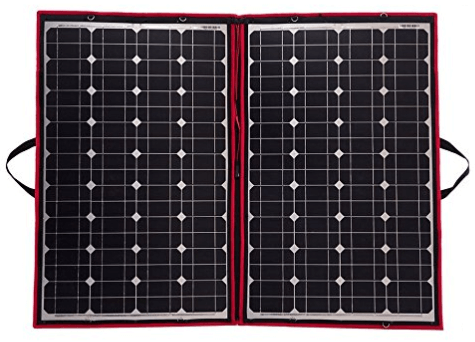

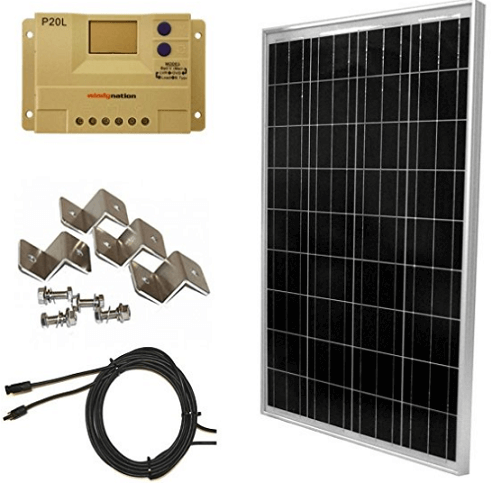
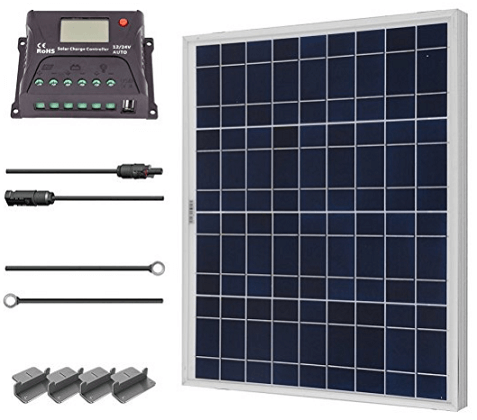
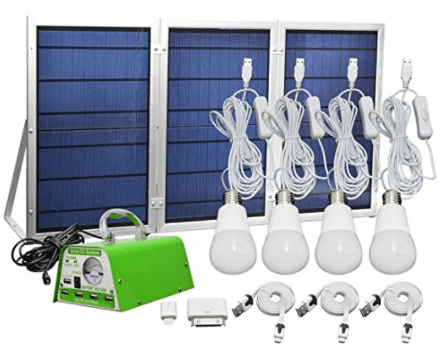

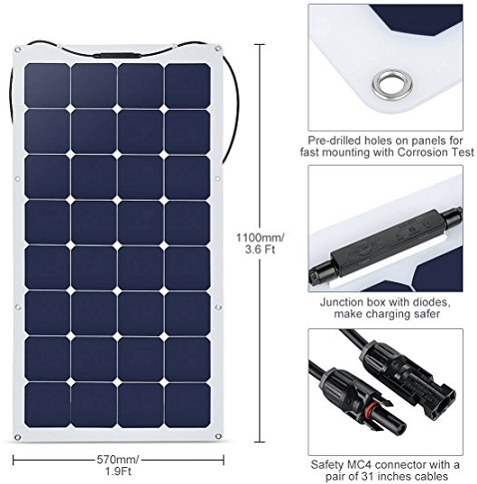

No comments:
Post a Comment